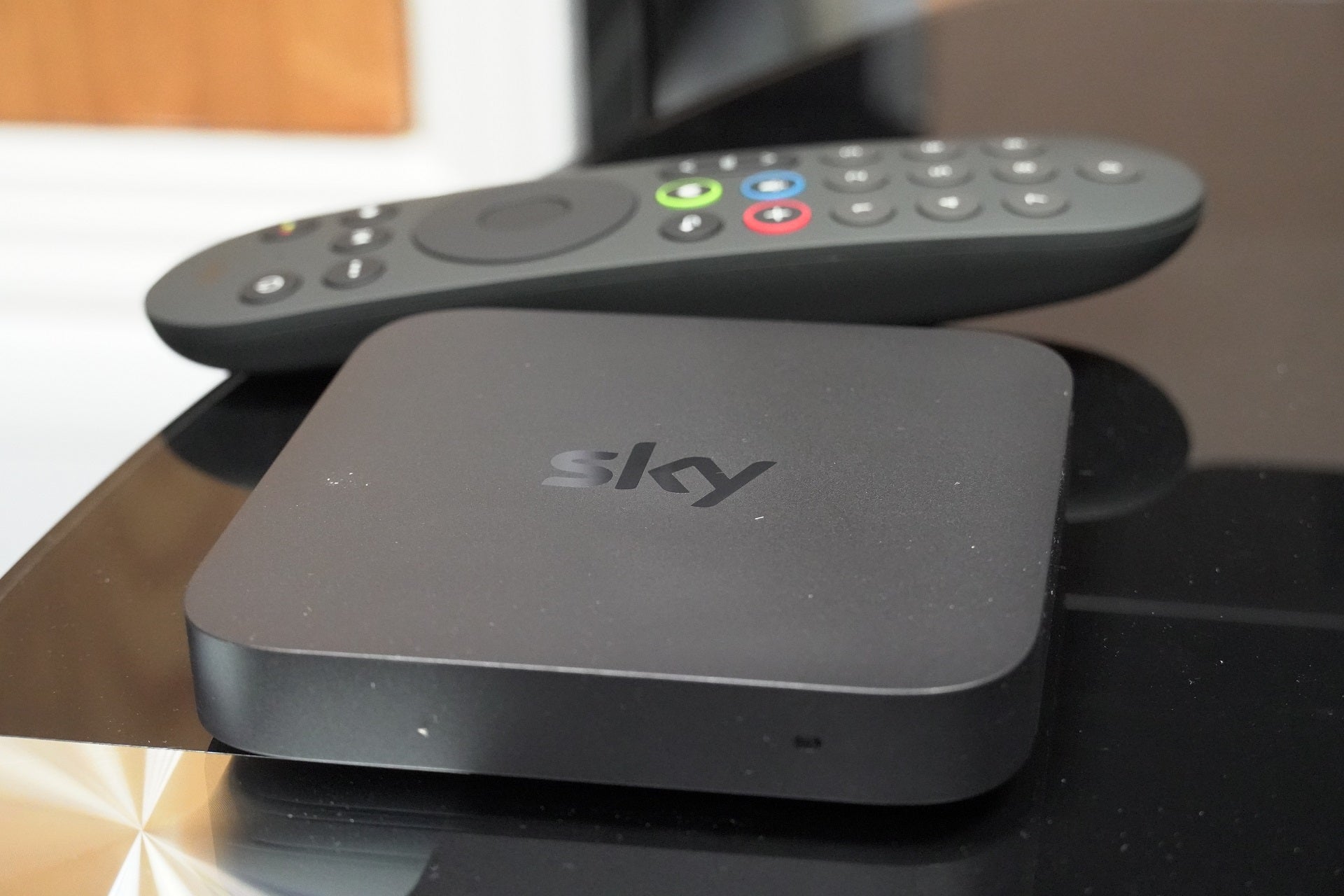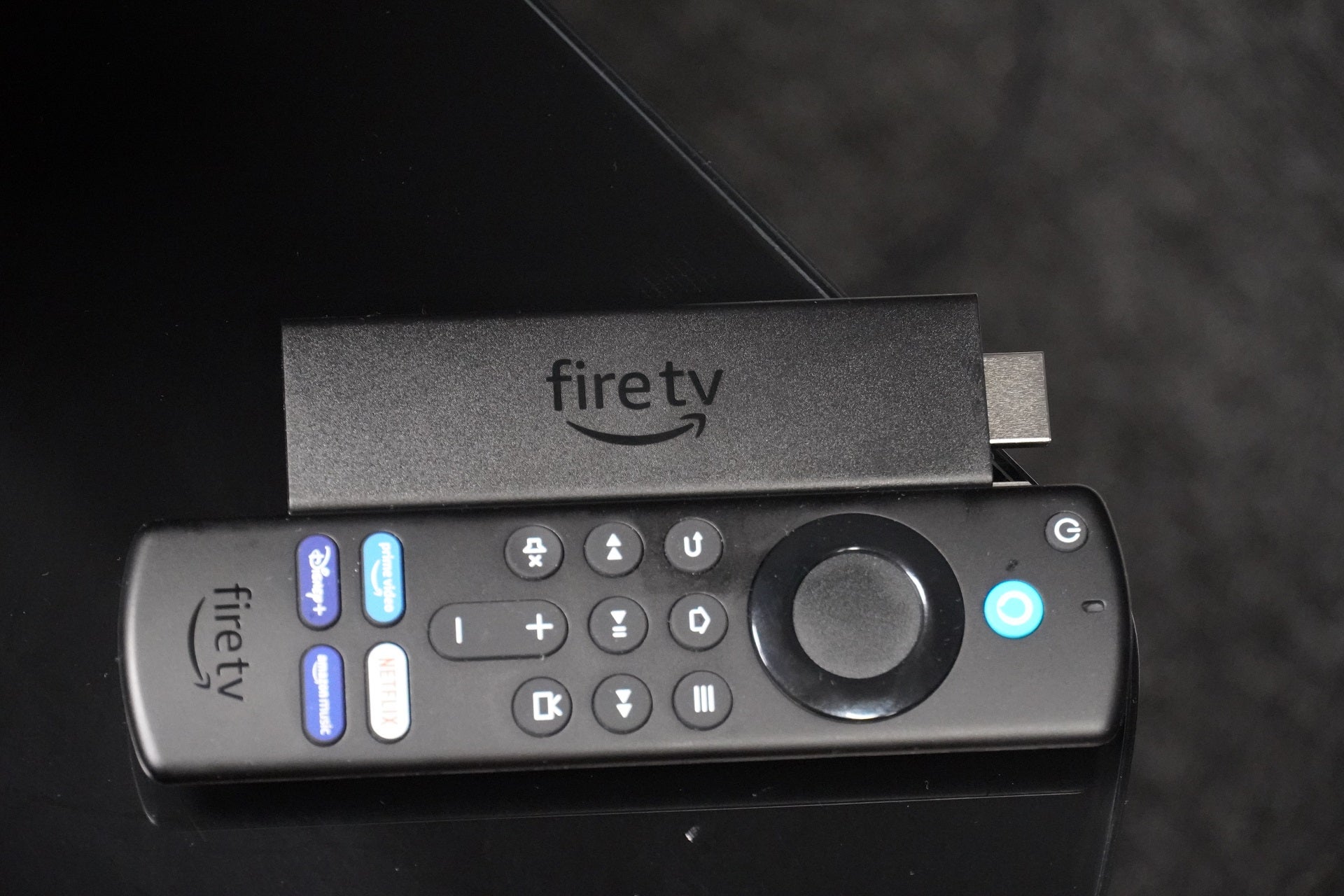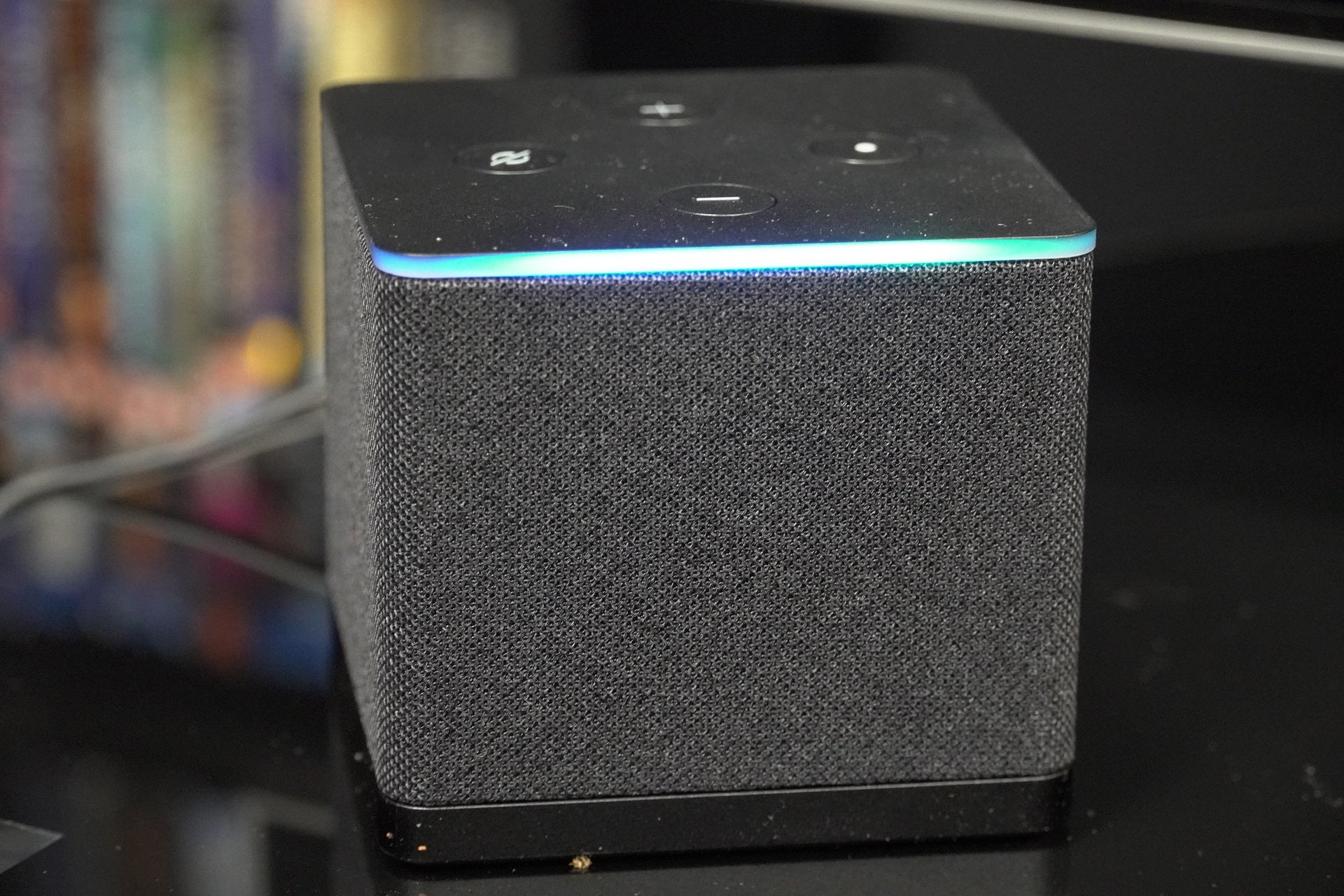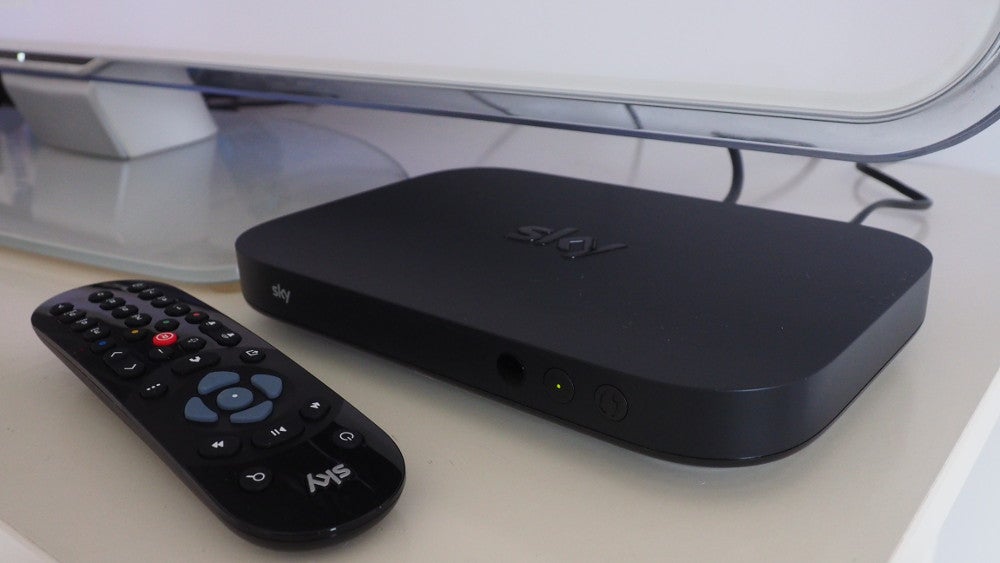Roku Premiere Review
An affordable way to stream 4K HDR


Verdict
4K on the Roku Premiere can look great, but picture quality across a number of apps is hit and miss, so this is an affordable 4K streamer with a few caveats
Introduction
The Roku Premiere arrives as part of the streaming giant’s recent refresh of its devices.
It’s one of the cheapest entry points to 4K HDR streaming, slotting in-between the budget Roku Express and Streaming Stick Plus. With that in mind, is it a bargain basement buy or is the Roku Premiere less the sum of its streaming parts? A bit of both, in turns out.
Design
- Looks like a puck
- Can draw power from TV/mains supply
- Just about visible LED light
As a streaming player, the Premiere has unconventional looks. It’s not a streaming stick, nor is it a hockey puck/box – think of it as like a small chocolate bar.

It’s diminutive size means it’s dwarfed when beside a TV. Even the remote is nearly twice as big. But its small size makes it easy to place, whether that’s on top of the TV or on the side thanks to a double-sided adhesive strip that comes in the box.
On the back are USB and HDMI connections, the latter requiring a HDCP 2.2 compliant port. Handily, HDMI and micro-USB cables are bundled in the box, and for power there’s an adaptor. If the cable can’t reach the mains, it can draw juice from the TV’s USB port instead.
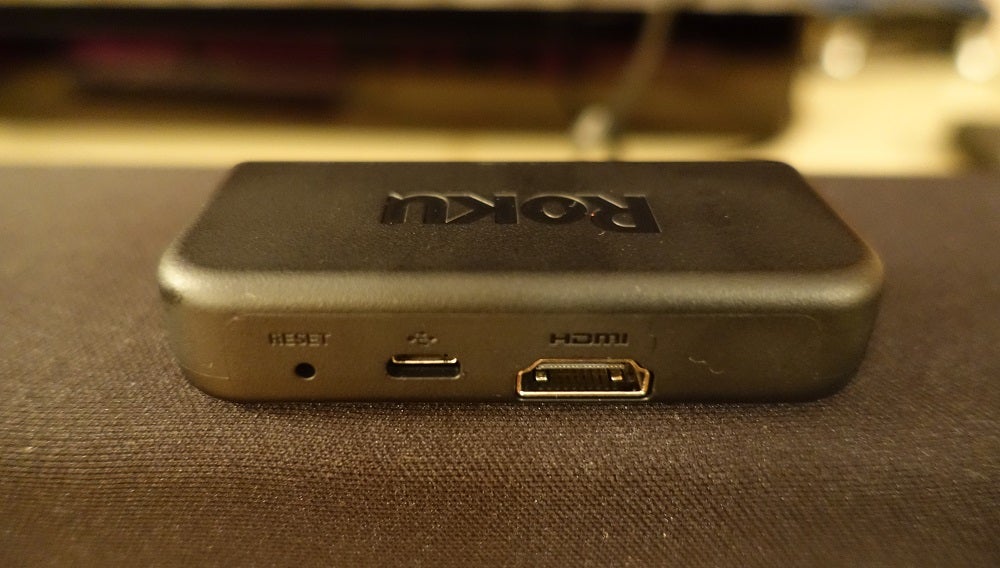
There’s a white LED light on Premiere’s front that’ll flash for connection problems or turn red for power issues. From normal viewing distances, it’s just about noticeable.
Once you’ve connected everything, placed the Premiere player where you want and set it up on the wireless network, you’re done. Plug and play at its most efficient.
Interface
- Easy to use
- Simple remote
- Roku app offers more functionality
The main screen is divided into Home, My Feed, Search, Streaming channels and Settings.
Home is where the main streaming providers are located. My Feed is where you can track films and have alerts set up for when they pop up on various apps/channels. Search is self-explanatory. Streaming Channels offers access to 1000+ channels, and in Settings you can add payment methods, pair devices etc.
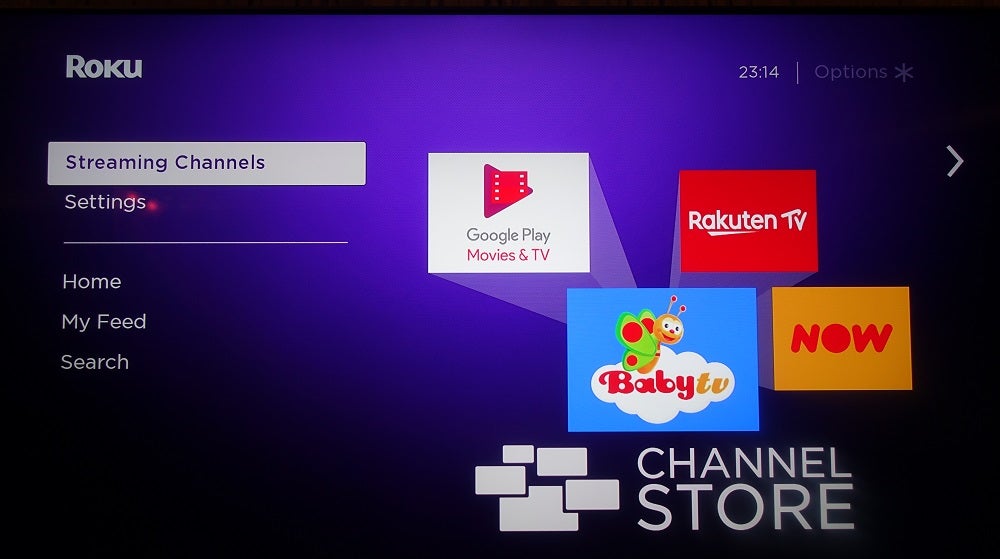
Home is where you’ll spend most of your time. You can add more channels and move them around for quicker access if you select them and press the star button on the remote.
The remote is a simple affair with home, navigation, playback and return keys, but no volume controls. At the bottom are buttons for Netflix, Google Play, Rakuten TV and Spotify, and if you’d rather just use the TV remote, the Roku Premiere supports the HDMI CEC standard.

Another means of control is over Wi-Fi through the Roku app, available on Android and iOS.
Is it worth a download? Actually, yes. The keyboard function makes search quicker; you can cast music, photos or videos and there’s a curated selection of content. Most importantly, it’s swift and responsive.
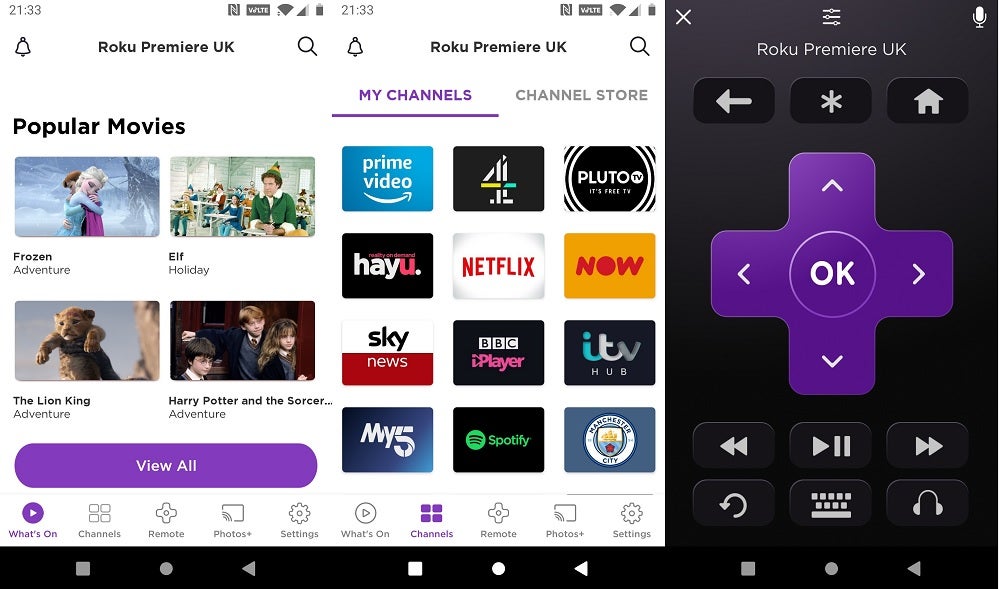
The app also serves up voice search – a feature the remote doesn’t – which calls up results from the gargantuan number of channels available.
Some may feel the interface is overly simplistic, but it’s clean and easy-to-use.
Features
- Huge number of channels
- Platform agnostic approach to apps
- Not a huge amount in 4K HDR
One of the best features, or perhaps most overwhelming, is how comprehensive Roku’s streaming devices are for content.
The number tallies at more than a 1000, and as Roku’s products are platform agnostic, there are familiar faces in Netflix, Prime Video and Sky News, sitting alongside others I had no idea existed, such as the Dog Relaxation Channel.
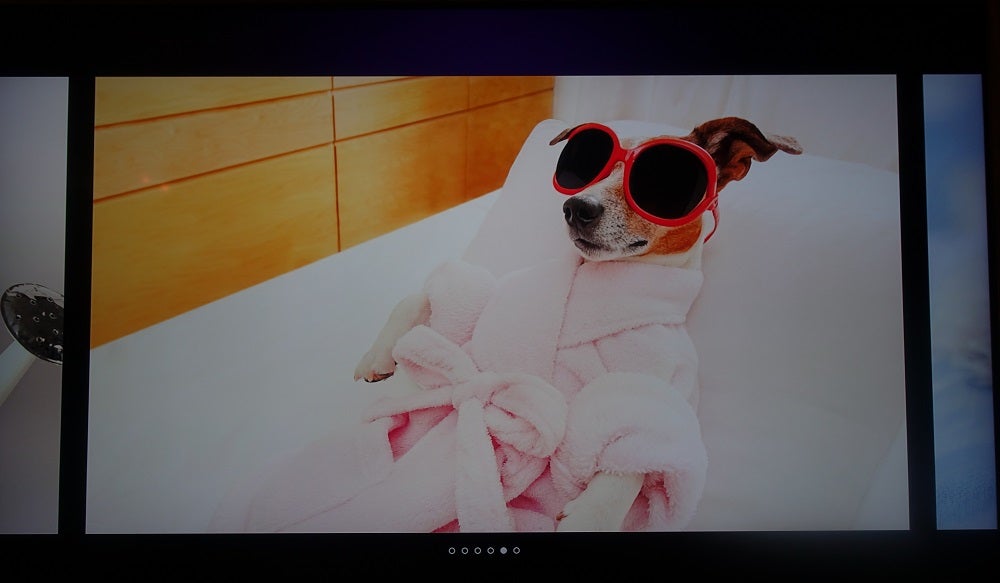
There’s plenty more from apps to games, to fitness and lifestyle channels – you can even choose a screensaver. For music there’s Spotify, Deezer, TIDAL and Vevo or if you have a particular niche, channels such as Top 80s Hits or Metal Mania.
All this adds up to a wide breadth of choice from free apps (BBC iPlayer), to live news and paid content such as Anime channel Crunchyroll or Manchester United’s MUTV.
The huge selection inadvertently shows up how few are in 4K or HDR. The main ones are Apple TV Plus, Netflix, Prime Video and YouTube, with BBC iPlayer in 4K.
Other 4K HDR channels include 4KUNIVERSE and NASA TV UHD, but considering the Roku Premiere is bringing 4K HDR to affordable prices, that’s not a huge amount of dedicated 4K HDR channels.

Max resolution is 4K 2160p content at 60fps, but it can upscale 1080p and 720p. HDR is industry standard HDR10, with no Dolby Vision or HDR10+, both of which feature on the Amazon Fire TV Stick 4K. There’s not even a sniff of the broadcast Hybrid Log-Gamma (HLG) the iPlayer uses.
I mentioned voice search earlier on and should clarify that both text and voice search only govern actors, titles or directors. If you’re searching for a channel, or think it allows for hands-free control, that is not the case. Text search doesn’t work in-app either, only in the Search section.

For audio the Roku Premiere supports PCM-stereo, Dolby, Dolby Digital Plus (or Atmos) and DTS. One last thing is the Private Listening mode, which means you can listen to the TV via a pair of headphones through the app.
Performance
- Good 4K performance
- Slightly middling HD performance
- Decent audio
Hooked up to a Samsung Q85R and Bosch on Prime Video is queued up. The opening credits look good, but the show is softer, less sharp and less detailed than the Prime Video app on the Samsung TV with some noticeable compression.
HDR performance is also slicker on the Samsung app, which is not a surprise considering Bosch is available in the more advanced HDR10+.
Moving to apocalyptic drama See on Apple TV Plus and performance is better. There’s detail, clarity and the HDR-assisted colours stick out whether it’s the orange fires of a burning village, the verdant greens of a forest or the blue hues of a river.

Next up is Netflix’s Mindhunter. Again it’s a slick presentation, and with dark scenes the Roku Premiere just about survives intact.
It’s with HD content in the iPlayer app where picture quality begins to jar the most. Watching NFL This Week, colours are bumped up, complexions are hotter and faces shinier, whereas the Q85R’s iPlayer app is more composed. There are also some motion issues not present on the Q85R app.
Colours and complexions on the Q85R’s iPlayer app are more natural and accurate, whereas the Roku is warmer and less detailed

Black crush is also noticeable and these issues crop up in other apps with brightness and colours turned up a notch too much.
On to NOW TV and the new Watchmen series. NOW TV broadcasts in 720p and picture quality is decent. Again, there are aspects of blacks being crushed and it’s not the clearest image, but it is watchable.
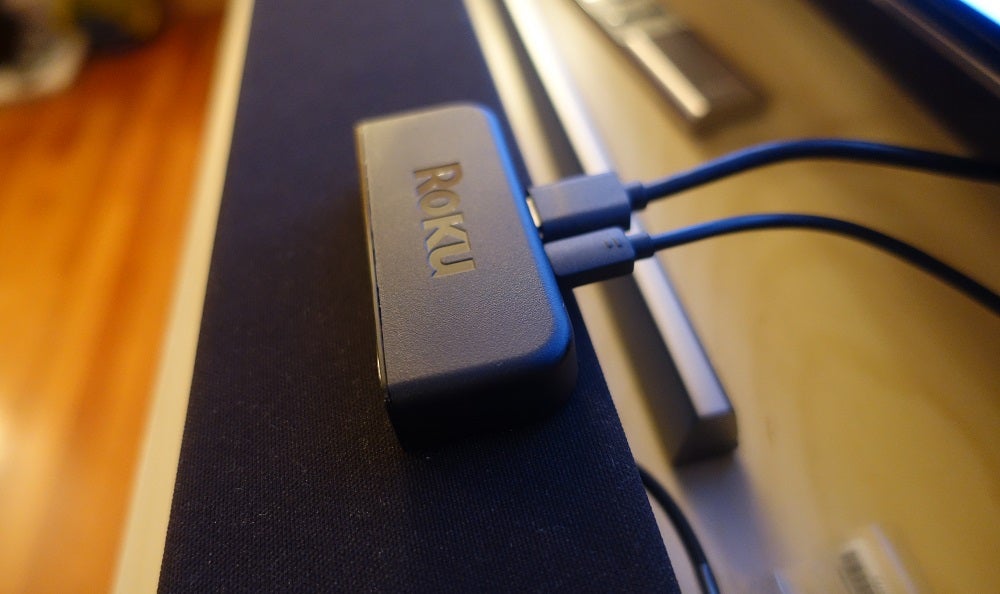
Rewinding can cause blurriness as the stream buffers, though it’s not problematic unless your internet connection is weak.
Audio is respectable, though to my ears the Roku’s performance wasn’t as effective the audio through the TV’s apps. Atmos isn’t widely supported, but if you’re not watching anything too demanding, the Premiere is a decent performer.
Latest deals
Should you buy it?
You’re after a cheap 4K streaming player If that’s the case then the Roku Premiere does a decent job. Surprisingly, it’s with sub-4K content that it’s not always the best, but feed it 4K and it performs capably.
You watch lots of 4K HDR content The lack of Dolby Vision, HDR10+ and HLG hinders things, as does the small number of apps/channels that support 4K or HDR. As an alternative there’s the Roku Streaming Stick Plus, which offers better video performance and HLG HDR.
Final Thoughts
4K HDR can look great, but picture quality across a number of apps is inconsistent, so while this is an affordable 4K streamer, it comes with some caveats. The lack of Dolby Vision and HDR10+ formats also means you won’t be able to get the best picture performance from your favoured streaming services.



